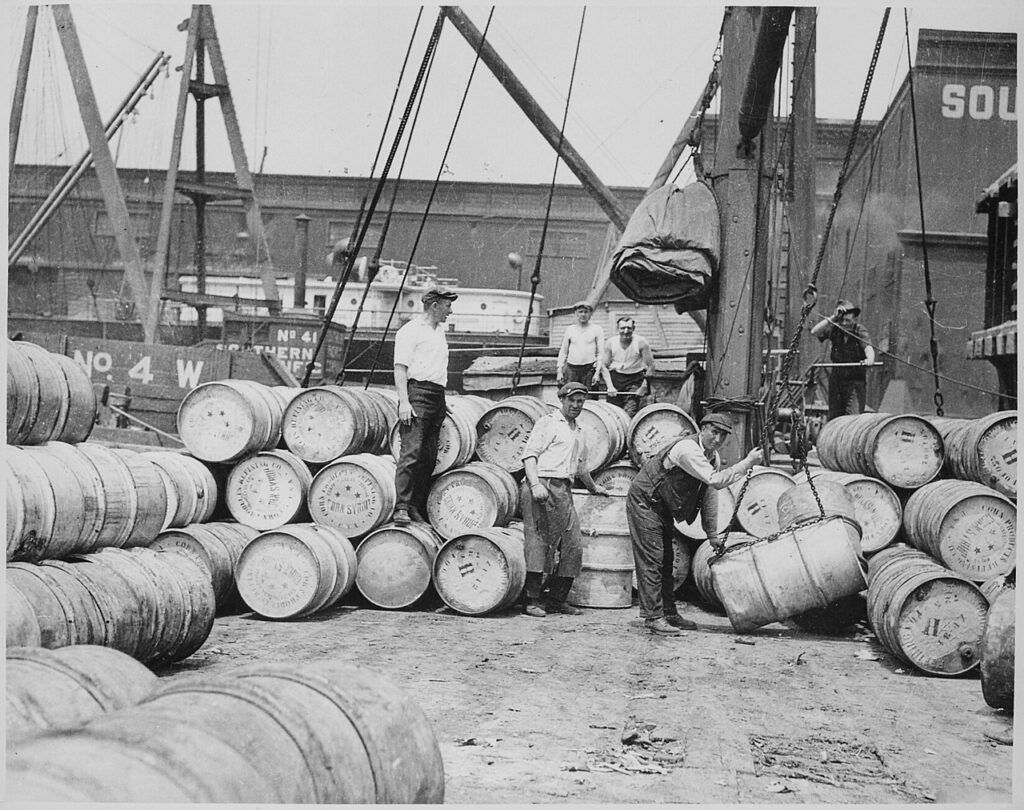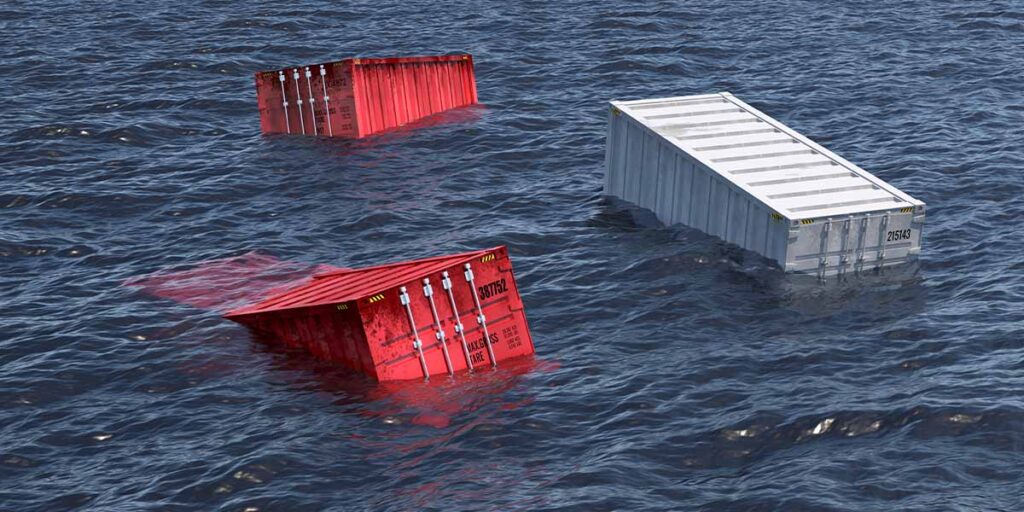Cargo Ships vs Container Ships: What’s The Difference?
When you hear the term ‘cargo ship’, what do you think of?
- A ship with big cargo spaces stuffed with bags of grain or coal?
- A tanker carrying fuel or chemicals?
- A container ship stacked with colourful boxes?
Whatever comes to mind, you’re probably right. ‘Cargo ship’ is an all-encompassing term for just about any merchant ship that transports goods.
Container ships are a type of cargo ship, but we will look at them in this article as a separate category of ship.
The invention of the standardised shipping container and of container ships revolutionised shipping, so let’s look at the differences.
Before container ships, the world relied on tramps
It sounds strange, but it isn’t a typo! The most common type of merchant ship before the introduction of shipping containers was called a tramp steamer.
A tramp steamer is a ship which has no fixed commercial route and can carry a variety of different types of cargo to different ports around the world.
Tramp steamers still exist and are frequently used – the Baltic Exchange in London is still a busy hub used for matching shipowners with potential charterers – but they are no longer the primary means of transporting cargo. So, what changed?

Break bulk is the term used for cargo that is loaded and transported as separate pieces, rather than in containers.
Think of pallets of machinery parts, bags of grain, and barrels of vegetable oil all loaded together in one hold, all different shapes and sizes. Before shipping containers, this was how cargo ships operated.
Although versatile, break bulk cargo is very slow to load and can lead to a lot of wasted space.
Think of a cargo hold filled with break bulk as a game of Tetris where lots of the pieces don’t fit together perfectly. It leads to a lot of empty spaces between cargoes of different shapes and sizes. This lost cargo space is known as broken stowage.
On a cargo ship, lost space is lost revenue, and so it was inevitable that a better solution would eventually be found.
The man who changed transport forever
The invention of the standardised shipping container is credited to American businessman Malcolm McLean, who owned a trucking company.
McLean saw the inefficiency of loading and unloading break bulk cargo and sought a solution. As a result, he not only created the first iteration of the shipping container, but also built the first purpose-built container ship to carry them in 1956, called Ideal-X.
The Ideal-X was able to carry containers in a single layer on top of her cargo hold, and was seen much as a prototype. The vessel that followed her in 1957, named Gateway City, was the first true container ship in that she was capable of carrying containers stacked on top of one another.
Due to the reduced manpower required to load a shipping container compared to break bulk, McLean’s invention saw his cargo loading costs fall from $5.86 per ton to $0.16 per ton, a 36-fold saving. This also allowed ships to spend far less time in port, meaning that they could carry out more voyages and make more money.
The container ship rapidly gained popularity and has gone on to play an enormous part in the modernisation of global trade – but it still isn’t the most common type of cargo ship. Click here if you’d like to find out more: How Many Cargo Ships Are There In The World?
Are container ships better than general cargo ships?
Container ships and general cargo ships both have their advantages and disadvantages, although the popularity of the container ship shows that it has the upper hand on the general cargo ship most of the time.
| Container Ships | General Cargo Ships |
|---|---|
| Reduced theft and damage due to container security | Can take smaller or specialist individual loads that would not fill a container |
| Much greater cargo capacity | Can take items too large or oddly-shaped to fit inside a container |
| Significantly more efficient loading and unloading | Recipients can order the exact amount of cargo they want without incurring costs of paying for an entire container |
| No broken stowage | Better for tramp steaming |
| Refrigerated containers allow perishable items to be transported easily and safely | Less susceptible to parametric rolling |
Why don’t stacks of containers fall over?
Container ships are often stacked dozens of metres high with containers – but how do they stay secure?
Each cargo ship – not just container ships – carries an official document called a Cargo Securing Manual. This document gives details of lashing equipment used onboard the ship, expected acceleration forces due to the vessel’s movement, and a spreadsheet for calculating the required number of lashings for different weights and placements of cargo.
The main method of securing containers is by using twistlocks. These are heavy-duty metal locking mechanisms weighing around 5 kilograms each. Twistlocks fit into the corners of any shipping container and allow them to be secured to both the ship’s deck and to another container above and/or below it.
The bottom two rows of containers will also be secured to the deck using lashing rods. Higher up in the stack, some containers may be secured using lashing rods to a platform known as a lashing bridge.
Do containers really never fall off ships?
When you see a fully-loaded container ship, it can look dangerously top-heavy with its containers stacked up to 25 metres high.
However, as the containers loaded on top of the main deck of a container ship are the only ones that can be seen from the outside, people often do not realise that many of the ship’s containers sit within its holds.
The majority of the ship’s weight is at the bottom, with her heaviest parts – equipment, fuel, ballast water – being located below the waterline.
With containers loaded below deck, the ship’s centre of gravity is kept sufficiently low to be safe, even with a full load of containers above deck.
While the containers situated lower down within the ship are safe, the ones which are stacked above the main deck have been known to fall overboard in extreme cases.

So, do containers ever fall overboard? It has been known to happen, but it is almost always due to a combination of extreme weather conditions and insufficient or improper lashings on the containers.
One phenomenon that could lead to containers being lost overboard is called parametric rolling.
Parametric rolling is caused by the interaction between waves and the hull but mainly occurs with the flared hull shape unique to container ships and some car carriers.
The phenomenon occurs when significant waves are directly ahead or astern of the ship and the ship is experiencing both rolling and pitching.
If parametric rolling occurs, a container ship can very quickly build up a significant angle of heel which can lead to containers at the top of a stack being lost overboard. In the most extreme cases, it can even lead to the full capsizing of a ship.
